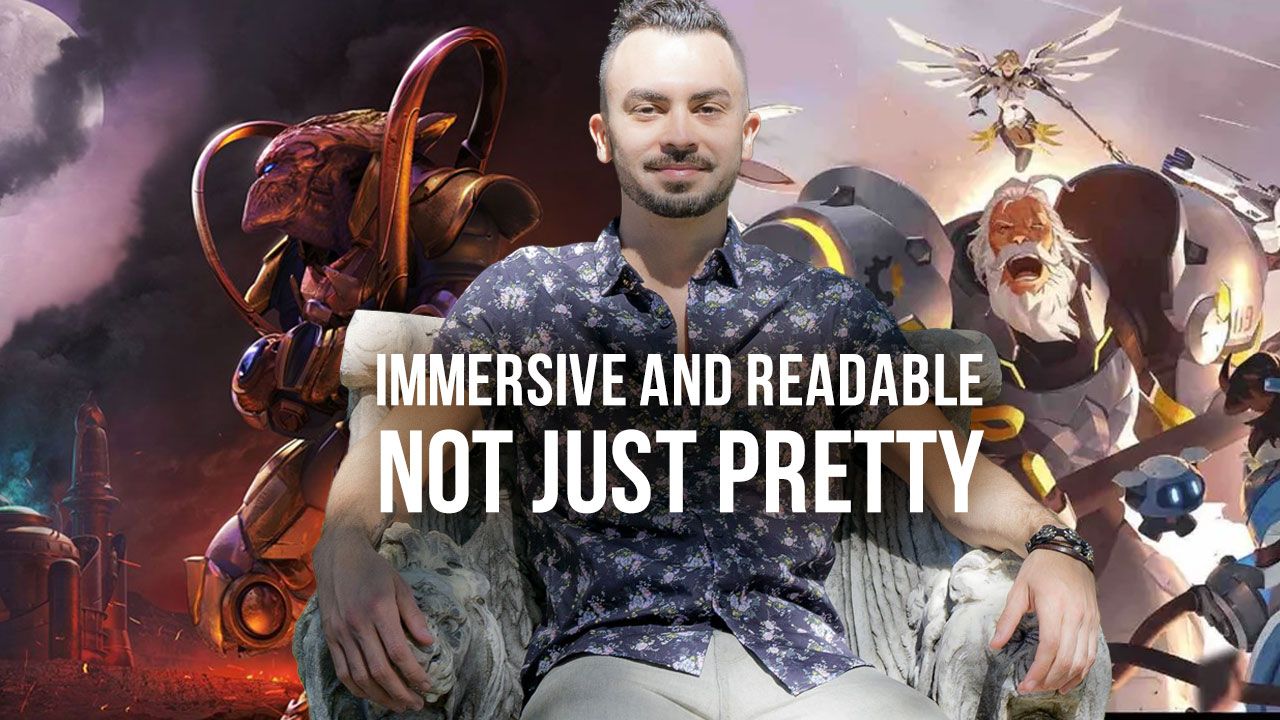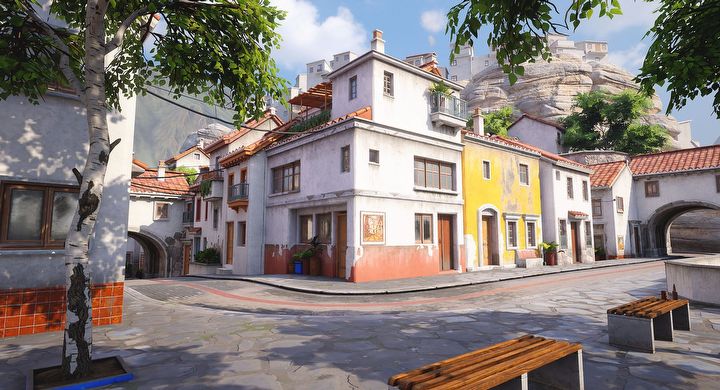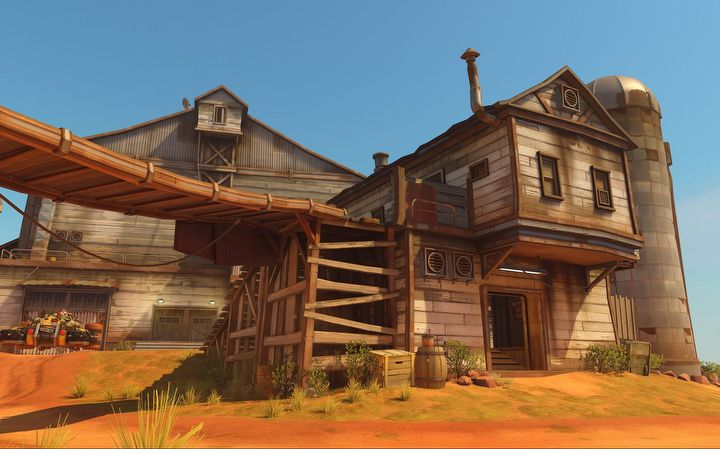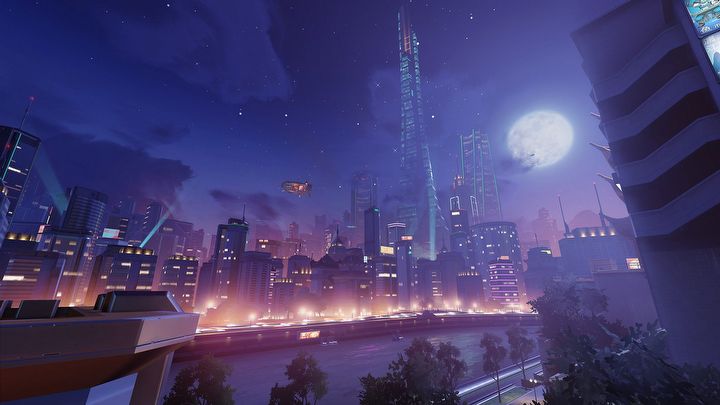Thiago Klafke, Artist on Overwatch and Starcraft II, Talks Principles of Game Environments
Join us as we dive into the virtual world with renowned game developer and former Blizzard employee, Thiago Klafke, who shares his rich journey in game development and the fundamental principles that drive his design choices.

THIAGO KLAFKE
Environmental artist with more than 20 years of experience. He worked in companies such as Blizzard, Tencent and Ubisoft. He spent almost a decade at the former, developing project like Overwatch and Starcraft II: Legacy of the Void. He is currently working on Project X in 100 Thieves and also teaches courses for 3D artists.
Why did you choose this project after your adventure with those big companies? Is it very different?
Thiago Klafke: Indeed. I worked on big games before with bigger teams, middle-sized teams, but when 100 Thieves got in contact with me I just fell in love with the story of the company. It’s a melting pot of different cultures, businesses, everyone is very young, there’s great momentum there. I was ready for a new challenge, for something fresh, for taking some risks. Nowadays, in bigger companies, it’s harder to take risks, because the budgets are so big, there are so many conventions and stuff.
Why players should be excited about this particular project?
It’s going to be a fun game, a place where you can just come, be creative and have a good time.
Right. You do environment art – for the casual player, what is your work about?
My work is a bridge from the level design to the art. I don’t do gameplay, I do what the level designer intends and try to make it readable. I give the context, the story, the textures, the visual aspect. I’m also making environments that are easy to navigate for the player. I do maps and those maps have a purpose.
Immersion is something we are all familiar with, not everyone can put a finger on it, but it’s like this feeling of being inside the game. What does it take to create an immersive environment?
The way I can simplify this is when you bridge both sides of the brain – the logical side and artistic side. This means avoiding things that seem out of place, like visual glitches, all these things that bother the brain. The other side is to make things that have style, pattern, repetition, that are pleasing to look at. I think that immersion comes of this.
Speaking more broadly from a game developer’s perspective, immersion is about removing all things that distract the player – numerous UI-s or overcomplicated mechanics, because they take attention away from the experience. I love the games like Elden Ring, in which you can finish the game with the same weapon if you want to. You don’t need to spend a lot of time in the menus, you can be in the game all the time.
It’s interesting that you mention bugs – they often occur by accident, it’s always a technical aspect of the game. But still, are you saying that the whole experience can be harmed by glitches, so you need to work on eliminating bugs making the game more artistically fulfilled?
Yes. Sure, there always will be bugs, nothing is going to be perfect, but from the art perspective this means making sure that textures and resolutions are kind of similar in the map. It’s very distracting when a very sharp and high-res texture is found right next to a blurry one. That’s what I mean by visual glitches in environment art sense.
So if you can’t eliminate all errors, you have to just make them, somehow, invisible?
Yes, you have to cover them up. If there is a shadow border, and there is no way to fix it, you can cover it with some props in a way that keeps the environment feel natural.
When a stage designer is preparing a set for a movie or theatre, they always do it for the actors only. When you are designing an environment in a video game, you have to consider non-player-characters, player-characters and, of course, the interactive influence of players. It seems rather complicated, so how do you manage that? How do you treat movement of players?
The way I do that is I work in stages. Before I do any detailing and art, I work only on the navigation and the composition. Then I am walking around the environment, around all corners, in all directions, and I am adjusting things. Like, “oh, I can move this building a notch,” and then it gets better. So it is a balancing act, jumping from corner to corner to make it feel good. But it’s a process you need to iterate.
Do you try to predict what way the player will take while exploring the map?
Yes, but different projects require different solutions. An open-world game is going to take a different approach from a very linear game. In shooters, like Overwatch, the maps are small, sidelines are much more important, but in games like Cyberpunk, sidelines are not really a problem, you can have those huge vistas.
You’ve worked on CS in sparetime and more professionally on Overwatch. They are both PvP shooters – does the multiplayer factor of this game change the way you were designing the environment? Or would you do it the same way if Overwatch was a single-player experience?
The biggest thing for me is to make sure the player doesn’t get lost. Before I do any artwork per se, I am making sure that level design is understandable. You can do that by increasing the variety in areas, having the right size of the map – if the map is too big or repetitive, you’re going to get lost there.
What is the difference between designing environment in a strategy game and designing environment in an FPS? They seem a world apart.
It is very different. The biggest difference is the camera. In the shooter, you have a lot more freedom in camera movement, and as an artist, you also have a lot more freedom of what you can change in the design process. In Overwatch I had this freedom to move things, redesign areas. StarCraft was a top-down game, so the design was very specific. It was more about replacing the assets more than changing the design. The design there was more precise.
Which of your environment art works you are the proudest of?
It’s difficult to point a specific one. I would say I’m very proud of Rome and Rio in Overwatch. I’m from Brazil, so it was an honor to make a map of my country, and imagine the Brazil in the future. I was very passionate about Rome, too. I visited this city, took a lot of pictures, went back and told the team that we had to do this.
In terms of personal projects, there’s quite a few of those. The last one, Spanish Town, I’m proud of because it’s a true, immersive VR experience. I also created the maps so I could document my process and create a course to teach other people how to create immersive environments. A lot of people that took the course have created all these unique, creative, original environments, using the same techniques and steps as I did.
What convinced you to help other developers?
It’s just pleasure. I come from Brazil and when I was growing up I wanted to be a game developer, but there were no game studios in Brazil, no gamedev school you could attend. I knew what I wanted to do, but I did not know how to. And then, when I was playing Counter-Strike, there was the Brazilian map, I have spotted a banner of the website of the creator of the map. It was a moment of enlightenment: “Oh shit, someone has made this, I can make it too.” Then I went to his website and there was a free manual on how to make CS maps. It was very simple, like how to build walls, how to build doors, how to make sky, and I was very grateful for that.
I’m only here because all these people made tutorials before. They created level editors, they created games. I wanted to carry this mission forward, to help the new generation; there’s a lot knowledge that’s getting lost now – different programs, different workflows. But there’s a lot of value in bringing that old knowledge to the modern world. That’s why I’m trying to build a bridge, teach the new generation to be good environment artist. Not just to make pretty things, but also immersive and readable.
If you are interested in Thiago Klafke’s works and courses, feel free to check his website out right here.
And now can we take a moment to talk about StarCraft 2? You’ve designed parts of environments for different factions – Xel’Naga, Protoss, Terran. They all have different characteristics, so what was the plan to capture those differences in terms of colors, shapes, and architecture?
Working on StarCraft was for sure one the best experiences in my life. There was an older team in Blizzard, a group of developers that worked on original StarCraft. It was amazing to share workspace with them. I did Legacy of the Void, so a lot of work was already done in terms of style, universe, shape, language and worldbuilding. My work was often based on descriptions, Terran’s city for example. I was like – ok, I have seen Terran’s cities before, so it was easier to imagine what kind of city we need. Though, Protoss city was a fun thing to make, because it was something never made before.
So there was a place for a bit of improvisation?
Oh, a lot. We had broad concepts that were just a big picture – not details, just general vibe. We had to make stuff up. StarCraft style comes a lot from texture, and it was a huge fun to work on it.
10 years in Blizzard is quite a feat. What was the best part of working in this company and how does this experience help you today as the developer?
It was an honor to work there for so long and be part of the studio’s history. A special place with special, very humble, united people. It felt like a family. Blizzard was great in hiring people with a good mindset. I learned a lot.
And in terms of artistic process, how did it look?
I think that everyone wanted to do their best. Blizzard has this legacy of great art, so there was no place for crappy art. There was a competition, but in a good sense – to make things better and better.
What would you say to the players that underestimate the work developers, complain about bugs, underestimate the amount of work needed to create a game?
My side VR project took 2 years, so yes, it always takes a long time to create games. For players, it’s hard to comprehend the complexity of making games today. In the past, with 10 developers, you could made a masterpiece. Now, making a AAA, you need hundreds of different studios, different programs that are constantly updated, the hardware is updated, there are so many things that can go wrong.
So it was easier back in the day.
It was much easier. It was simpler. To make a texture, you just needed a Photoshop. Now, when you make a texture, you can use different programs – ZBrush, Substance Designer, Substance Painter, Photoshop, Quixel etc.
Nowadays developing games requires much time, for instance Rockstar is publishing 2 games a decade. Should we expect even more time spent on the biggest AAA projects?
I think there’s one part of industry that’s going to be like that, but I also see that now; all these tools, they are going to bring something new. I think smaller teams will now have a bigger advantage, the new tools will largely bridge the gap between them and major companies. For example, while working on Spanish Town, I bought some assets – to be more specific, trees. It’s easier to go the shop and buy skyboxes or sound banks. You pay 20 dollars and get high-quality, professional assets. At the same time things are getting more complex, but also more accessible. I think the people are going to be smarter in terms of usage of available resources. Some old companies are stuck in their old ways, and they will be still stuck in their old ways – I don’t see that changing. But the new generation is what I am most excited for.
DIGITAL DRAGONS 2023
Interwiew was organised with the kind support of the organisers of Digital Dragons 2023. Thank you very much!



